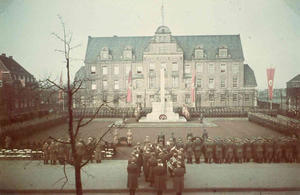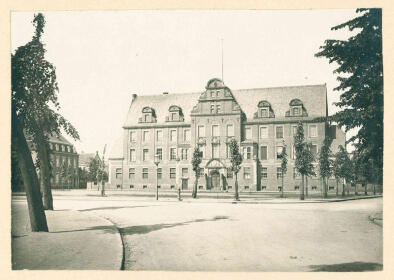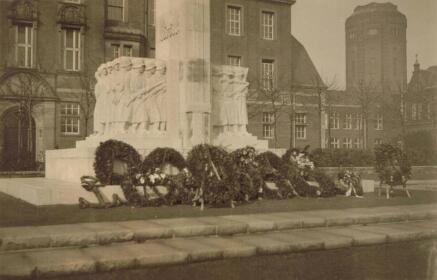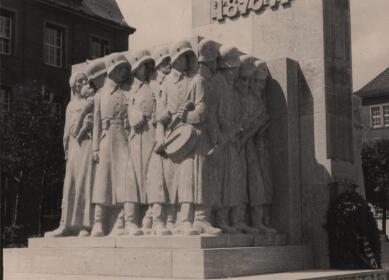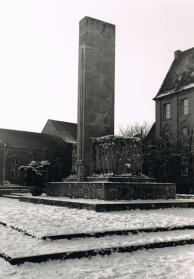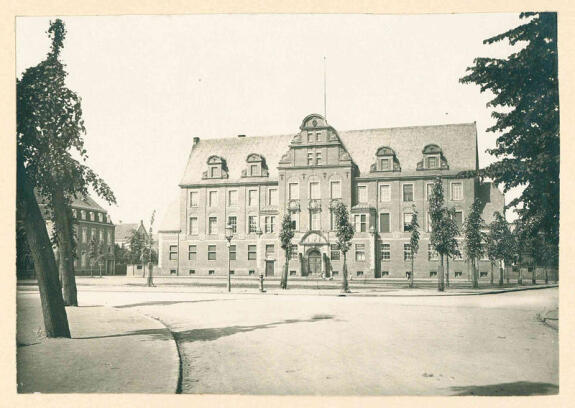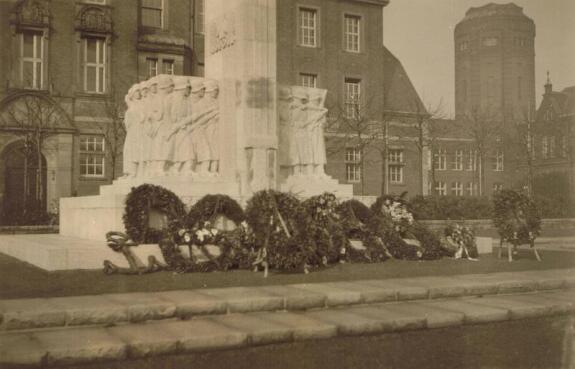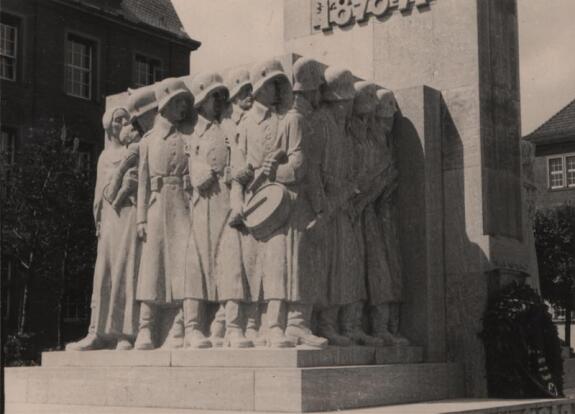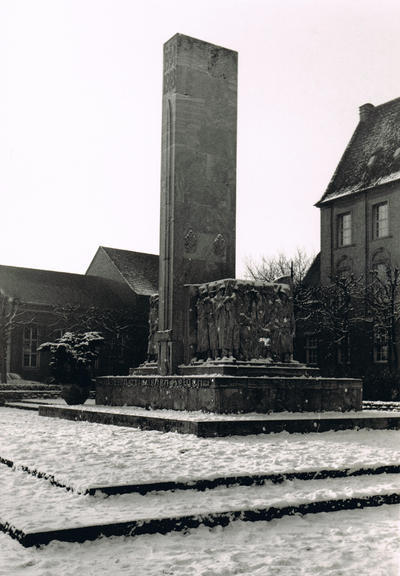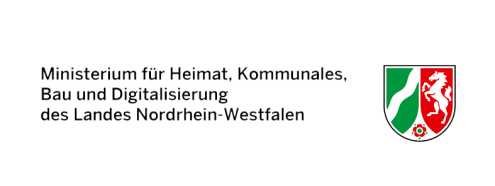Benölkenplatz
The viewer looks from today's Stenerner Weg (then Diepenbrockstraße) towards the district court built in 1911 on Kaiser-Franz-Josef-Platz, which was still completely unaffected at the time. It is only separated from Nordstraße (to the left) and Herzogstraße (to the right) by young lime trees.
The city's financial situation at the time prevented more generous landscaping. The office and residential building of the lawyer Ludwig Hebberling, who built here in 1919, can be seen on the far left. The Münster public prosecutor's office has been located in this building since 1956.
About the picture
16 March 1941: A memorial service was held at the Heroes' Memorial on what was then Hermann Göring Square. Two field greys kept a guard of honour around the memorial throughout the day. The quartered troops as well as the units of the movement, the warriors' comradeships and other formations set up around it.
After a chorale performed by the SA standard band, Lieutenant Tzschökell, the site elder, gave a stirring speech in which he recalled, among other things, the heroism of the world war fighters, which had been renewed in that war by the soldiers of the young German Wehrmacht. From this, Tzschökell drew the conclusion that it was their duty to serve the fatherland with the same willingness to sacrifice from the heroic deaths of the fallen [of the Second World War] and the movement.
It was part of the legacy of the fallen to remain unwaveringly loyal to the Führer and to help him in his difficult and decisive struggle for the future of the German people.
Here you can listen to a conversation about the emerging danger of National Socialism and the protest movements of the time.
The functions of the square have changed over the years: from the original cattle square, where animals were first traded in 1871, to today's Benölkenplatz. During the National Socialist regime, the square was renamed "Hermann-Göring-Platz" and used for parades, marches and hero memorial ceremonies. Since 1947, the square has been named after the mayor appointed by the military government, Dr Wilhelm Benölken.
Street names of the square
| name | Period |
|---|---|
| Stockyard | until 1900 |
| New square | 1900-1916 |
| Kaiser-Franz-Josef-Platz | 1916-1935 |
| Hermann Göring Square | 1935-1945 |
| Cattle Square | 1945-1947 |
| Benölkenplatz | since 1947 |
Sources of the audio files
Contemporary sources on the NSDAP rally:
- Nazi guest appearance in Bocholt, in: Bocholter Volksblatt, 24 June 1930 [Bocholt city archive]
- Nazi propaganda march, in: Grenzwarte, 23 June 1930 [Bocholt city archive]
General information on the events at the NSDAP rally:
- Detlef Fischer, Chronik des Münsterlandes, Münster 2003, p. 419.
On the "Group Communist Politics":
- Certification of the election proposal for the Bocholt city council election on 17 November 1929, signed by the Lord Mayor i. V. [Stadtarchiv Bocholt, Bestand Stadt Bocholt 2, order no. 3407)
On the Prussian uniform ban, see for example:
- Andreas Wirsching, From World War to Civil War? Political extremism in Germany and France 1918-1933/39. A comparison of Berlin and Paris, Munich 1999, p. 455.



